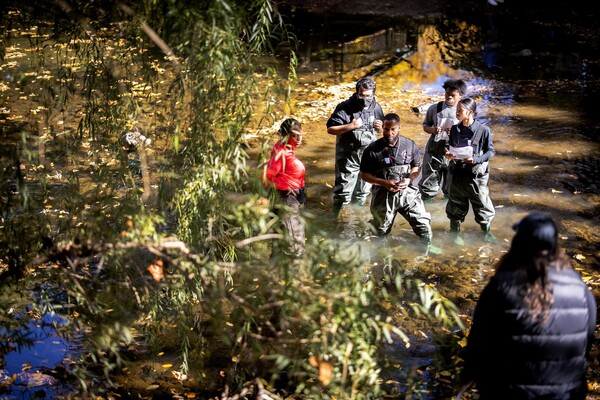Plants to eat toxic waste
Coming to an EPA Superfund site near you may be a ferocious plant that devours heavy metals.
Cadmium! Arsenic! Mercury! Outta here!
That plant would be a designer plant, with key designers here at Penn’s Plant Science Institute.
Professor of Biology Philip Rea, Ph.D., headed the team that identified, cloned and patented the one gene required for plants to survive in toxic environments loaded with cadmium, arsenic and mercury. And the team discovered the way the gene does its job.
“This is the gene that many have wanted to get their hands on,” Rea said. “Several labs have tried to clone this gene and failed.”
Plants altered by insertion of that gene would be able to rid land and water of three of the top-10 pollutants listed by the Environmental Protection Agency in a less costly, less drastic way than current methods, Rea said. Compare adding chemicals or physically moving the contaminated ground to planting and reaping.
Rea and postdoctoral research fellows Olena Vatamaniuk, Stéphane Mari and Yu-Ping Lu (who has since left the University) conducted their hunt at a breakneck speed, taking only a year.
“We got it accidentally,” Rea said of the gene.
They began their search by grinding up Arabidopsis thaliana for its genetic material.
The Arabidopsis plant is the workhorse of plant biology. Its genome is well-mapped and relatively small; the plant is small but reproduces prolifically — each plant makes about 10,000 seeds; and its generation time is short. Its small size makes it unsuitable for cleaning up the environment, but ideal for Rea’s research.
It was also ideal for the team’s original gene hunt.
The researchers then transferred the genes to yeast cells that were especially sensitive to heavy metals. In this way, the team found about 100 genes that enabled the yeast to survive in cadmium.
But they hit the jackpot, because what they found was a gene that not only allowed the yeast to tolerate cadmium, but to absorb it as well.
This was the long-sought gene that encoded a protein, recognized since the 1980s, as responsible for making phytochelatins, which bind heavy metals, taking them up from the environment. The team had not only discovered the molecular basis by which plants produce the phytochelatins in the presence of heavy metals, but they had also isolated and cloned the gene responsible.
Rea expressed confidence that the creation of plants designed for toxic waste treatment is just a few steps away. For starters, the team is working on a way to insert the gene in plants larger than Arabidopsis, plants better suited to growth on sites contaminated with heavy metals.
The main brake — besides those few steps — is concern about effects that designer plants might have on the ecosystem. But as long as the plants contain modifications to protect the environment, they will be used, Rea said. That’s because the projected cleanup costs for the EPA’s priority clean-up sites, using existing physical and chemical methods, would be $750 billion. He said, “A market force would come to bear.”







